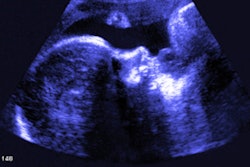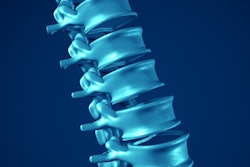Dear AuntMinnie Member,
Handheld ultrasound is one of medical imaging's most exciting technologies, putting the power of imaging into the hands of healthcare professionals at the point of care. But handheld ultrasound's real potential may lie in an even larger market: the home.
That's the perspective of Alan Stoddart of U.K. market insights firm Signify Research. In an article that was our top story for the week, Stoddart reviewed the recent evolution of handheld ultrasound, in particular the new breed of scanners that cost as little as $2,000.
At that price point, handheld ultrasound is cheap enough to be marketed directly to consumers as a gadget that can be used in the home. And that has a whole host of ramifications, both positive and negative.
In other news in our Ultrasound Community, a new study published this past week in PLOS Medicine questions the use of fetal ultrasound to predict infant size at birth. Very large infants can cause complications during delivery, but ultrasound might not be accurate enough to be used on a screening basis.
Get these stories and more in our Ultrasound Community.
Blood flow and tau buildup
In other news, researchers from California used MRI and PET to find a connection between impaired blood flow to the brain and the buildup of tau in patients with Alzheimer's disease. The research adds to our understanding of how neurovascular pathology and tau buildup are interrelated.
In another recent study, Chinese researchers applied an artificial intelligence (AI) algorithm to bone scintigraphy scans in patients with breast, lung, prostate, and other cancers, finding that the model helped detect metastases to the bone.
Read more in our Molecular Imaging Community.
AI for COVID-19
Researchers are also finding AI to be useful in diagnosing cases of COVID-19. Another group from China found that its algorithm was able to distinguish between COVID-19 and other lung diseases such as influenza and nonviral community-acquired pneumonia.
Finally, we hope you enjoyed our October 14 webinar on radiology and subspecialization. If you didn't have a chance to attend in real-time, it's still available on demand for a limited time.


















